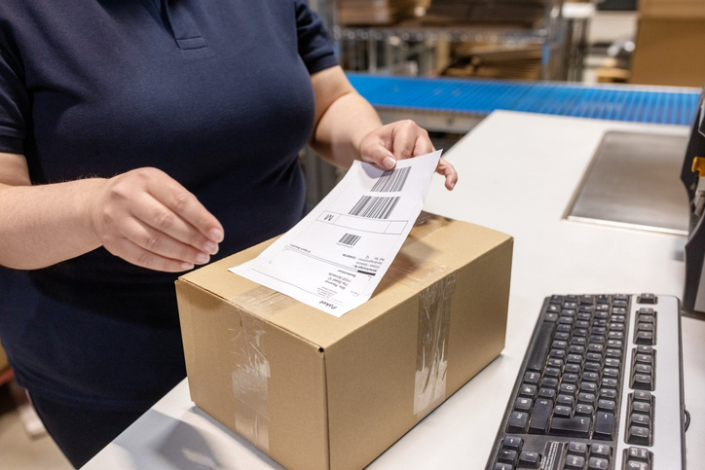At EasyPost, reliability is our top priority. We don’t aim for mostly reliable, we benchmark against perfection: zero downtime, zero disruption. Our uptime consistently leads the industry, and we’re constantly innovating to keep it that way. This guide explores what reliability really means for an API provider and how EasyPost delivers on that promise every day.
What is API reliability and why is it so important?
API reliability refers to the APIs likelihood to return accurate information. And the likelihood to return accurate information is based on the design and stability of the API infrastructure.
Consumers today expect fast and cheap shipping options when shopping online. In many cases, they evaluate brands entirely based on the shipping experience. Shipping APIs have become critical in the industry for allowing ecommerce companies to quickly integrate with multiple carriers to provide end customers with better shipping options. But this means major revenue streams for shippers often rely entirely upon third-party APIs. Quickly, ecommerce companies’ evaluation criteria for shipping APIs have moved heavily toward how reliable the service is.
A reliable shipping API returns the requested information consistently and accurately, always. All the marketing dollars spent to get customers to make it to the checkout page go to waste if your page fails to load shipping rates. Even an hour of downtime can result in significant revenue loss during peak season.
EasyPost understands this better than anyone, so we set out to build the industry’s most reliable API offering. We proudly publish current and historical uptime metrics across all of our APIs here.
In the next section, we describe in detail how we measure reliability.
How do we measure reliability?
Reliability should be both measurable and visible. That’s why we track every outage event and instance of downtime across our core services—and share that information openly. Rather than listing historical metrics here, we invite you to explore our live status page to see real-time and historical performance for yourself, including during peak season when reliability matters most.
In the next section, we outline some of the key innovative things we are doing to maintain our industry-leading uptime.
How do we do it?
The list of items below details some of the key innovative methods we employ to maintain our industry-leading API reliability. However, we also employ many common industry best practices not described below.
1. Rate limiting
EasyPost conducts extensive load testing to determine safe rate limits for all new releases to mitigate the probability of outages. Rate limits allow for customers to safely scale up their operations to the needed volume without impacting our broader customer base.
2. Diversified cloud storage
EasyPost diversifies cloud storage providers so that no single server outage will bring down services that rely upon cloud storage. Critical services such as our label API rely upon the cloud to fulfill requests.
3. Distributed data centers
EasyPost uses geographically distinct data centers to support all customer-facing services. Every data center has a fully replicated data center in another far-away region to ensure maximum reliability in the case of a regional outage.
3. Native rating engines
EasyPost has built native rating engines with as many carriers as possible so customers can continue to purchase labels with carriers even if carrier APIs are down. We currently support native rating engines with USPS and FedEx as well as several regional carriers and are actively looking to expand with more carriers. We want our customers to benefit as much as possible from our investment into reliability and uptime and are actively pursuing native rating coverage across additional carriers.
4. Carrier outage detection
EasyPost has carrier API outage detection processes in place to ensure our APIs reliably return useful information to customers, even when carriers are down. Without this outage detection, our customer-facing APIs would consistently and redundantly wait for each request to time out, creating unnecessary delays and system strain.
In the event of a high volume of requests without outage detection in place, processing those timeout responses would pose a significant risk to our system. For this reason, when outages are detected, we update API responses to send back immediate error messages indicating the outage. This significantly reduces the risk to our system and provides a useful response to customers so they are better equipped to manage around the disruption.
5. Zero downtime releases
EasyPost releases require no downtime or maintenance and previous versions can be reverted instantly. We do this by saving previous versions of our codebase to ensure that if any issues are identified from a new release, we can revert to the previous version immediately with no downtime. This infrastructure allows us to push changes live daily at no cost to customer experience. We also use what is known as a “canary” environment which allows for new releases to be tested with a small subset of production traffic before they are pushed live to all customers. This results in customers very rarely seeing issues that impact 100% of their traffic.
6. Security-first culture
All features and services offered to customers are first scrutinized and audited from a security perspective to mitigate the risk of malicious behavior bringing down our system. EasyPost follows industry best practices on authentication, data encryption, user visibility, bot mitigation, rate-limiting (as described above), and more.
EasyPost is compliant with the most up-to-date security standards to mitigate risk and to ensure we meet the needs of all of our customers’/prospects’ security requirements. These measures holistically ensure that our systems are significantly less vulnerable to malicious behavior that can bring down our system.
Related guides
We know many components comprise an enterprise-grade API beyond just scalability. This guide is one part of a series of guides that describe all of the different aspects of our enterprise shipping APIs. Click below to learn more!
Ready to talk with a shipping expert?
Effective API documentation is critical to our customers’ success, and we’re committed to going beyond “good enough.” Expect to see our success metrics continually improving as we explore new, innovative ways to support developers at every step.




